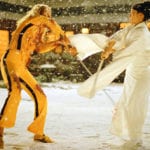 Technology
Technology  Technology
Technology  Humans
Humans 10 Everyday Human Behaviors That Are Actually Survival Instincts
 Animals
Animals 10 Animals That Humiliated and Harmed Historical Leaders
 History
History 10 Most Influential Protests in Modern History
 Creepy
Creepy 10 More Representations of Death from Myth, Legend, and Folktale
 Technology
Technology 10 Scientific Breakthroughs of 2025 That’ll Change Everything
 Our World
Our World 10 Ways Icelandic Culture Makes Other Countries Look Boring
 Misconceptions
Misconceptions 10 Common Misconceptions About the Victorian Era
 Mysteries
Mysteries 10 Strange Unexplained Mysteries of 2025
 Miscellaneous
Miscellaneous 10 of History’s Most Bell-Ringing Finishing Moves
 Technology
Technology Top 10 Everyday Tech Buzzwords That Hide a Darker Past
 Humans
Humans 10 Everyday Human Behaviors That Are Actually Survival Instincts
 Animals
Animals 10 Animals That Humiliated and Harmed Historical Leaders
Who's Behind Listverse?

Jamie Frater
Head Editor
Jamie founded Listverse due to an insatiable desire to share fascinating, obscure, and bizarre facts. He has been a guest speaker on numerous national radio and television stations and is a five time published author.
More About Us History
History 10 Most Influential Protests in Modern History
 Creepy
Creepy 10 More Representations of Death from Myth, Legend, and Folktale
 Technology
Technology 10 Scientific Breakthroughs of 2025 That’ll Change Everything
 Our World
Our World 10 Ways Icelandic Culture Makes Other Countries Look Boring
 Misconceptions
Misconceptions 10 Common Misconceptions About the Victorian Era
 Mysteries
Mysteries 10 Strange Unexplained Mysteries of 2025
 Miscellaneous
Miscellaneous 10 of History’s Most Bell-Ringing Finishing Moves
10 Spine-Tingling Tales from Indigenous Folklore
Indigenous peoples occupy only a quarter of Earth’s surface area, but they are integral in keeping at least 80% of the world’s remaining biodiversity intact. About 50% of the world’s land mass (excluding Antarctica) is managed by Indigenous communities, and around 40% of these landscapes are protected and ecologically healthy.
Indigenous cultures are absolutely fascinating, from their intricate traditions and rituals to the stories they tell. And their creepy tales are often far more chilling than anything modern storytellers can conjure up. So let’s take a closer look at 10 spine-tingling tales from Indigenous folklore.
Related: 10 Evil Winter-Dwelling Beasts From Folklore
10 Oniate
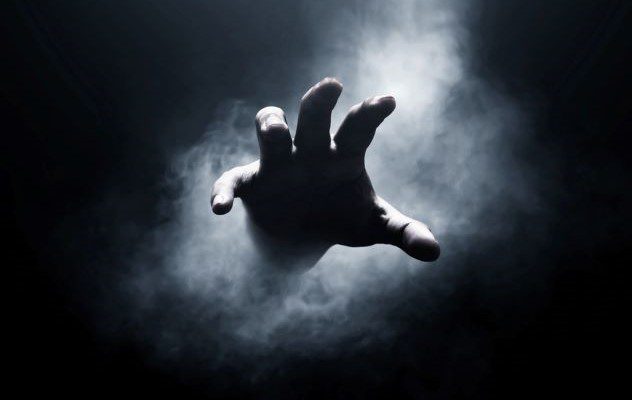
According to the Iroquois, a “dry” disembodied hand called Oniate crawls through abandoned areas waiting for humans to pass by. Once they do, Oniate attacks. In some versions of the legend, the creepy hand actively seeks out “evil” humans, especially those who cause fighting and discord within families. Oniate’s dry, dirty, diseased fingers will brush the skin of its victim, causing them to be afflicted with an assortment of ailments, including blindness. Sometimes a mere touch by Oniate is enough to kill.
A similar legend exists in South American folklore, in the form of La Mano Peluda, a hairy hand that is said to shoot out from underneath a child’s bed at night to grab them by the ankle.[1]
9 Mosquito Man
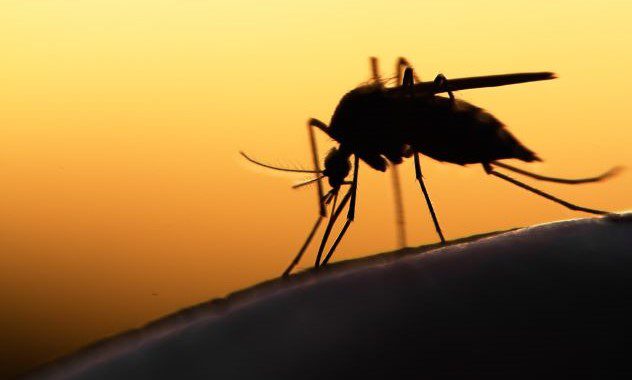
From what is now the Pacific Northwest comes the terrifying tale of the Mosquito Man. This creature looks human enough except for the fact that he has a very long proboscis which he plunges into his unfortunate victims’ skulls. He then proceeds to “suck” out their brains like a soft drink or brain-flavored milkshake. The scariest part is that the Mosquito Man kills so quietly that bystanders won’t even notice anything is amiss until the victim drops dead on the spot.
The Haida people have their own, even creepier, version of the Mosquito Man story. Their legend says that a group of people once stood admiring a new mother’s baby. They passed the infant around so everyone could get a closer look at all the cuteness. Little did they know that a Mosquito Man had joined them and was busy sucking the life out of the child. They only realized it when the creature passed the baby to the next person who saw that the child was dead.[2]
8 The Stone Woman
The ancient Maya people established a civilization that stretched across a large swathe of Central America. Dozens of Maya ruins are popular tourist attractions these days. One of these, Xunantunich, is the location of a ghost story that has been making the rounds since 1893.
A researcher working at the Xunantunich site in Belize saw what he later described as a “Mayan Maiden” gliding up the crumbling staircase of the site’s main pyramid. The man was stunned and continued to watch as the woman moved up the stairs, wearing a white gown of which the back was nearly hidden by her long dark hair. At one point, the woman turned and stared back at the man. He described her eyes as piercing, glowing red. When she turned away from him, she vanished.
Sightings of the “Stone Woman” continue to this day. It is believed that in life, she may have lived within the city which ruins she now haunts and that she was likely a human sacrifice who died on top of the pyramid.[3]
7 The Menengai Crater
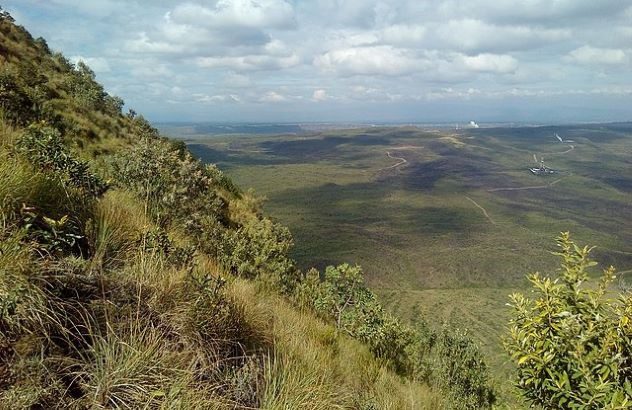
In the Great Rift Valley of Kenya lies the Menengai Crater. The crater was formed by a massive volcanic eruption that led to the collapse of the volcano’s mouth. The volcano was formed 200,000 years ago, and the crater is around 8,000 years old. While it is believed to be dormant, steam does rise from the crater floor every so often because of hotspots.
Maasai legend has it that the crater, colloquially named Kirma Kia Ngoma, which means “place of devils,” was once the site of a war between Maasai clans who fought over land where their animals could feed. The war culminated in the Ilaikipiak Maasai warriors being tossed over the edge of the crater.
Now, locals fear that the spirits of 60,000 of these warriors still haunt the crater. It is also believed that the steam that periodically escapes the bottom of the crater is, in fact, the souls of these warriors trying to find their path to heaven.
Furthermore, it has been reported that many who have visited the crater have vanished without a trace, while others have gotten lost, only to be found days later wandering around in a trance-like state.[4]
6 Mo’o
Seeing a mo’o, which often appears in the form of miniature geckos or dragon-like creatures, is considered to be good luck or a blessing. In ancient Hawaiian culture, these “protectors” are known as “aumakua,” and they control the weather and water of the Hawaiian islands.
However, should anyone anger the mo’o, they will stir up monstrous waves, knocking their enemies off steep cliffs. They will also dry up the water in streams and rivers, which is an all-important source of life.
Many ponds and pools in Hawaii had stone markers erected that told the tale of the guardian of the water. Visitors can still check in with the mo’o by dropping a flower into the water before getting in. If the flower moves away from the person who threw it in, they should rethink their planned swim, as the mo’o does not want to be disturbed.[5]
5 Mannegishi
The Cree, native to North America and mainly inhabiting Canada, believe there are two humanoid races—the one we’re used to and the other: the Mannegishi. These creatures are also called the “little people” and are said to live between rocks in the rapids. They have twelve fingers, large hairless heads, huge eyes, and no nose, and they often leave pictographs on the rocks. They are tricksters who love popping out from their hiding places and capsizing or spinning canoes that are being steered through the rapids by unwitting victims. Then they watch in glee as those inside the canoe land in the rapids and drown.
Some people believe that the Dover Demon is a modern version of the Mannegishi. The Dover Demon is also a small humanoid creature with grey skin and a large head on a small body.[6]
4 Yurei
The Japanese’s ardent belief in the existence of spirits can be traced back to the Indigenous Ainu people, who believed that ghosts were a manifestation of a human’s evil side. A Japanese ghost, known as a yurei, is trapped between the world of the living and the realm of the dead and manifests as a human shape missing its feet.
There are distinct types of yurei, classified according to how they died. For instance, the kosodate yurei is the ghost of a mother who died while giving birth and came back to make sure her child is well looked after. The onryo is a ghost filled with rage and revenge who died as a person harboring resentment toward others. Then there is the funa yurei, which refers to the spirits of those who lost their lives at sea.
The jibakurei is a ghost that cannot leave the place to which it is tied, figuratively speaking. Any living person who comes into contact with this spirit runs the risk of being trapped by it, as they hold a curse for exactly that purpose.
The tales of the yurei continue in modern times. After the 2011 earthquake and tsunami, many survivors reported seeing their deceased spouses. Some fire stations even reported getting distress calls from houses that had been swept away in the tsunami.[7]
3 Leaping Ghosts
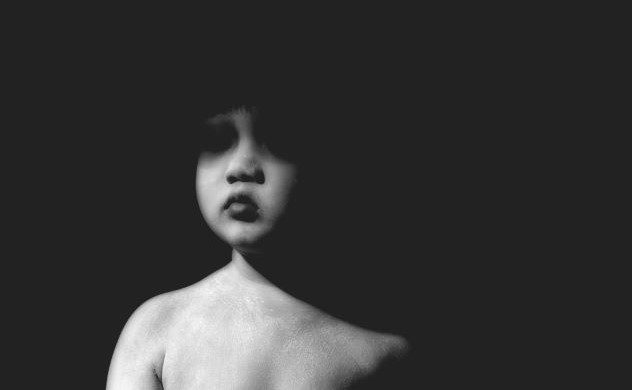
The Polynesians, too, believe in the existence of spirits. They tell stories of human spirits that travel to the sky world, or the Underworld, after death. Some spirits, however, remain on Earth and become ghosts. These ghosts are said to still be material beings, but they are much lighter than living humans.
Polynesian people who inhabit the Society Islands have different names for different ghosts. For instance, Hae is for the ghost of a person who drowned, and riorio is for the ghost of a child.
In the Māori culture, it is believed that the spirits of the dead make their way to Cape Reinga, where they leap into the ocean, thereby leaving the world of the living behind. In Hawaii, the dead jump from a breadfruit tree in order to enter the afterlife.
In Samoa, there is still a strong belief that if a person speaks ill of the dead, the spirit of said deceased person will return and “possess” the wrong-doer by entering their armpit and settling in their abdomen or in the back of their neck.[8]
2 The Salt Witch
Indigenous American tribes have long inhabited the Great Plains, and their folklore tales still make for fascinating reading. The Otoe people settled in Nebraska under the rule of a famously ill-tempered chief. The only person who could calm the ruler down was his wife, and after her death, he left his village to wander the world alone.
He returned after a while and brought a creepy tale with him. He told the villagers that he’d stumbled across an old woman who was savagely beating a younger one. Jumping in to break up the fight, he saw that the younger woman looked exactly like his late wife. He struck the old woman with a hatchet, killing her instantly, and then stretched out his arms toward the younger woman. But before he could grab hold of her, a sinkhole opened up in the earth, swallowing both women. In their place stood a single pillar of salt.
For a long time, the Otoe tribe visited the place where the salt pillar stood and beat the ground with clubs to prevent the “crazy old woman” from returning.[9]
1 Pavla Blanca
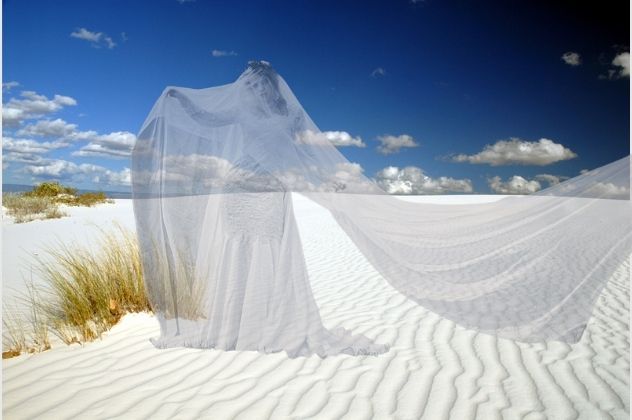
The Indigenous Americans of New Mexico have retold the tragic tale of Pavla Blanca for many generations.
The story goes that a Spanish conquistador, Hernando de Luna, left his betrothed behind in Mexico City in 1540 to join explorer Francisco Coronado. He was on a quest to find the Seven Cities of Cibola and Gran Quivira, where jewels and gold were said to line the streets and houses.
The adventurers were halted in their tracks, however, after being attacked by Apache warriors. They retreated back to Mexico City, but De Luna soon died of his wounds in the white gypsum sand dunes. De Luna’s betrothed, Manuela, learned of the attack and set off to find her beloved. She reached the white sands of the dunes and vanished.
She now haunts the dunes, wearing a wedding dress, still searching for her lost lover. She is known as Pavla Blanca and is said to appear like clockwork as the sun sets.[10]







